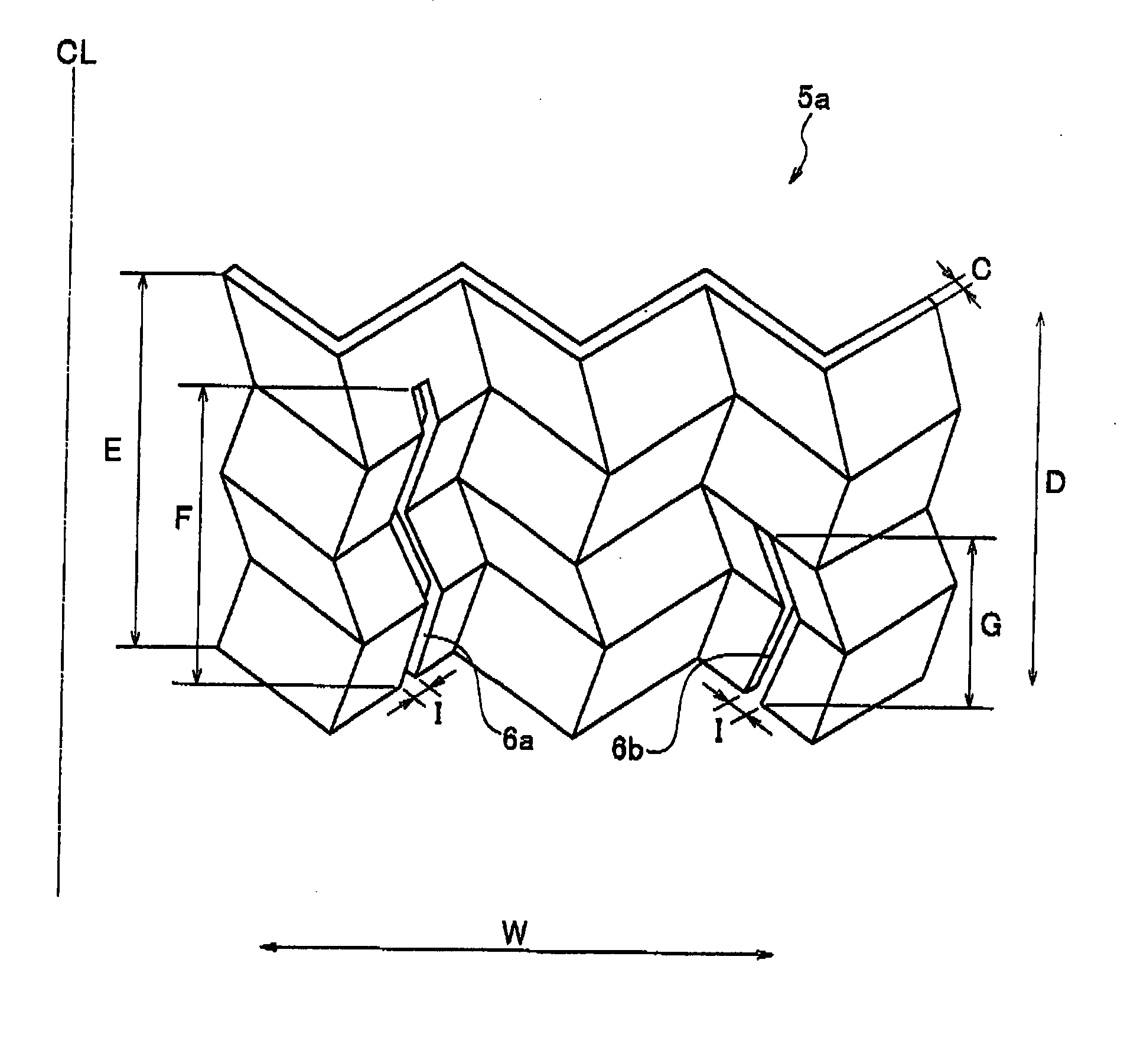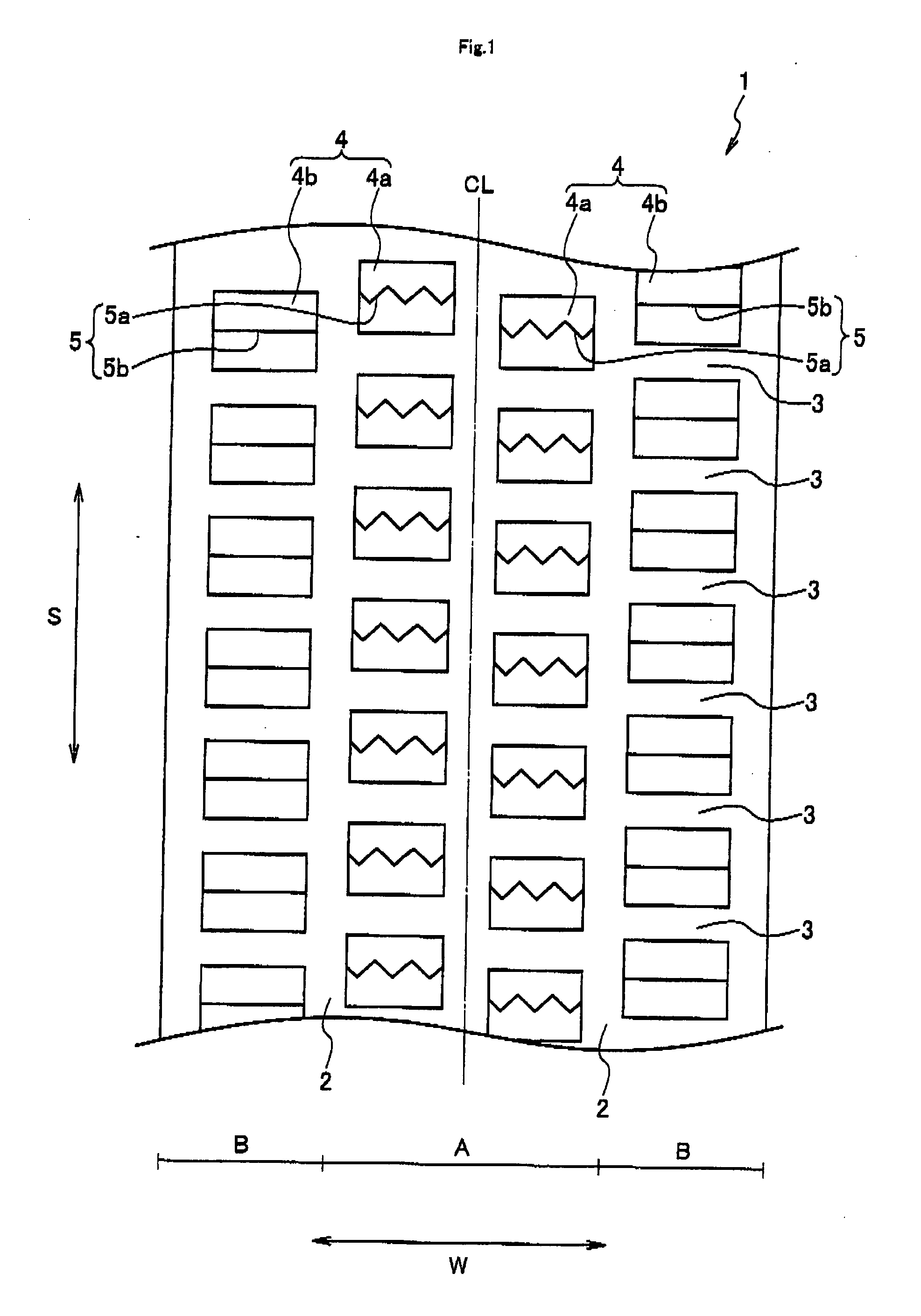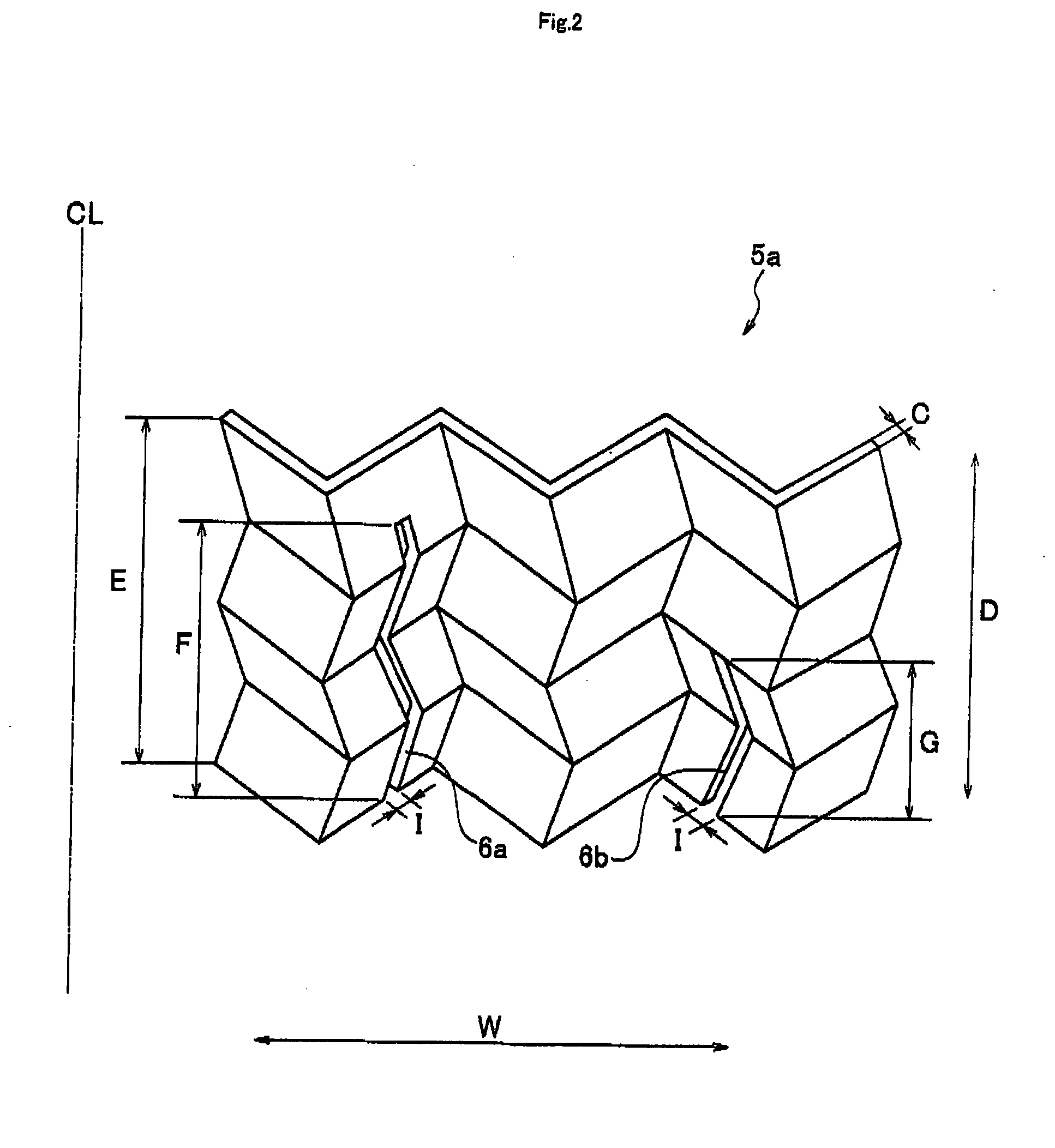Pneumatic Tire
a technology of pneumatic tires and blocks, applied in the field of pneumatic tires, can solve the problems of insufficient reduction of the depth of a part inability to fulfill the function inability to reduce the depth of the three-dimensional sipe, so as to suppress the reduction in the stability of straight running, the rigidity of the block on the tire equator line side can be further improved, and the effect of improving the stability
- Summary
- Abstract
- Description
- Claims
- Application Information
AI Technical Summary
Benefits of technology
Problems solved by technology
Method used
Image
Examples
embodiments
[0036]Hereinafter, descriptions will be given in detail of an example of the pneumatic tire according to the present invention.
[0037]A pneumatic tire including a tread portion of the present invention (Example 1) was prepared. The pneumatic tire was attached to a wheel, and then the wheel with the pneumatic tire was mounted on a front-engine front-wheel-drive vehicle with an engine displacement of 1800 cc. The vehicle was tested to evaluate the starting performance and the braking performance is on snow as well as the stability in straight running on the dry road surface. For comparison, pneumatic tires of Comparative Example 1, Comparative Example 2 and Comparative Example 3 were also prepared, and were then tested under the same condition.
example 1
[0038]Example 1 was the pneumatic tire of the present invention. This pneumatic tire is provided with the three-dimensional sipe 5a in each of the center-region blocks 4a, and is also provided with the linear sipe 5b in each of the edge-region blocks 4b. Each of the three-dimensional sipes 5a formed respectively in the center-region blocks 4a has the shape shown in FIG. 2, a groove width of 2.0 mm and two cutouts formed therein. The depth F of the center-side cutout 6a is 5.5 mm while the depth G of the edge-side cutout 6b is 4.0 mm. The linear sipe 5b formed in the edge-region blocks 4b has a groove width of 0.7 mm.
PUM
 Login to View More
Login to View More Abstract
Description
Claims
Application Information
 Login to View More
Login to View More - R&D
- Intellectual Property
- Life Sciences
- Materials
- Tech Scout
- Unparalleled Data Quality
- Higher Quality Content
- 60% Fewer Hallucinations
Browse by: Latest US Patents, China's latest patents, Technical Efficacy Thesaurus, Application Domain, Technology Topic, Popular Technical Reports.
© 2025 PatSnap. All rights reserved.Legal|Privacy policy|Modern Slavery Act Transparency Statement|Sitemap|About US| Contact US: help@patsnap.com



